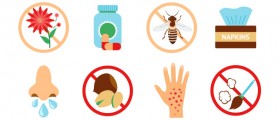
Introduction
Penicillin allergy is one of the commonly reported drug allergies. Among people who have taken it at some point in life with an adverse reaction, the majority will be able to take it again later in life without any problems, either because they were never actually allergic and their reaction was something else, or because their allergy basically disappeared over the years. In fact, only about 20 percent of people will still be allergic ten years after their initial reaction. Still, this does not mean that people should toy with penicillin, because an actual allergic reaction can be very dangerous.
Penicillin is probably the most prescribed antibiotic in the world, mostly because it has a wide range and can be used to treat a great number of different diseases. It is one of the antibiotics from beta-lactam group and it is marketed under many different names. A person who is allergic to one penicillin-based drug will probably have the same reaction to others from that family.
Reactions to penicillin
Adverse reactions are unwanted reactions to a drug. They can be allergic and non-allergic. Non-allergic reactions are more common and various digestive disturbances, such as stomach ache and diarrhea are typical examples of such reactions.
It is important to distinguish between allergic and non-allergic reactions since the two are often confused. If a person reports a drug allergy when the reaction is actually non-allergic, he or she will be given a different drug that might not be effective enough, leading to antibiotic failure or resistance.
Rash is a typical adverse reaction to penicillin. There are different types of rashes but those that involve hives or wide-spread and flat blotches suggest a true allergy.
Several symptoms may suggest penicillin allergy. Hives are one of them, along with angioedema or swelling of the tissue beneath the skin, usually on the face, tight throat, wheezing, coughing, hoarseness and difficulty breathing due to airway constriction.
A history of these reactions must be taken very seriously because the next time penicillin is used it can lead to even more serious reaction, such as anaphylaxis. Anaphylaxis has all the same symptoms as an allergic reaction, but with the addition of very low blood pressure, weak and rapid pulse, vomiting, confusion and unconsciousness. Anaphylaxis is rare but it can be fatal unless the patient receives treatment, usually in form of epinephrine as soon as possible.
One way to deal with true penicillin allergy is closely monitored and controlled desensitization, which must be done in a medical facility through administration of small doses of the drug.

















Your thoughts on this
Loading...